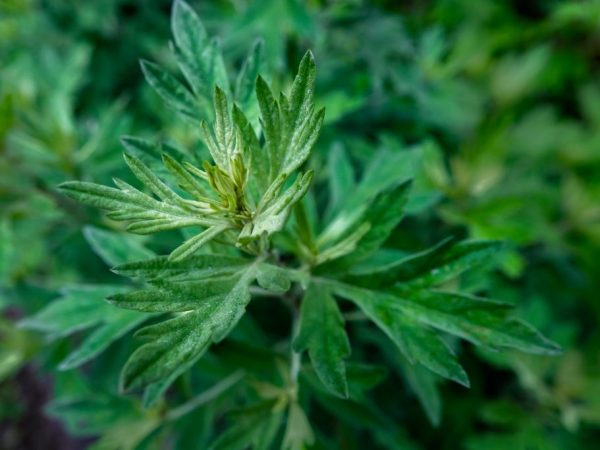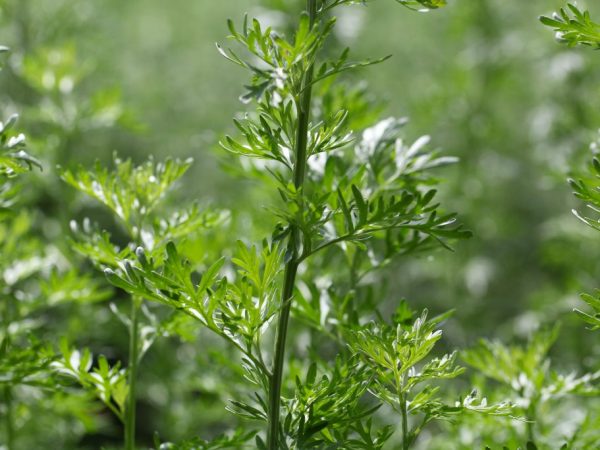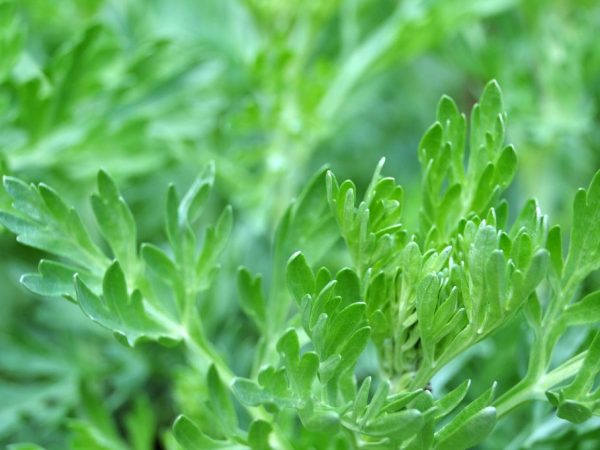In what places does wormwood grass grow
Widow's grass, chernobylnik, evshan - all these are different names for the same plant. The generic name in Latin Arteres is associated with the name of the Greek goddess Artemis. The Russian version originates from the word "flame", "fire" because of the scalding, bitter taste of the herb. Where does wormwood grow, how is it used, what and how many varieties are there?

In what places does wormwood grass grow
General information
In total, more than 400 species are known, 170 of which grow in Russia. Belongs to the Astrov family. Unpretentious to external conditions, can do without moisture for a long time.
There are annuals, biennials and perennials, as well as tall and undersized species.
Tall specimens
Representatives of this species reach a height of 80 cm to 2 meters, less often 2.5 m.Ideal for decorating a garden plot, making hedges, decorating flower beds, etc.
Sacrificial (Gmelin)
Grows in the Far East, preferring glades, forest edges, meadows, river banks. It has a number of medicinal properties (analgesic, antipyretic, mucolytic, antiseptic, decongestant), because it contains:
- essential oils;
- tannins;
- organic acids;
- bioflavonoids, alkaloids, etc.
It is part of the drug Hamazulen.
Bitter
Originally from Europe, has long been growing in Western Asia, North Africa. Often grows:
- on roadside;
- on forest edges;
- near residential buildings.
The bitter herb is used to make oil in the United States and southern Europe. In the Leningrad region, Moscow and the Moscow region, its collection is widespread for making absinthe at home.
It is used in a wide variety of areas:
- The medicine. Wormwood-based medicines and essential oils, due to their bitter taste, irritate the nerves that leave the taste buds. This leads to an increase in the function of the gastrointestinal tract. Leaves for medicine are harvested at the first stage of flowering.
- Cooking. It is a wonderful spice for fried meat dishes.
- Alcohol industry. The herb is part of absinthe.
- Textile industry. From the top, paint is made for fabric in various green shades.
- Gardening and horticulture. Used to destroy caterpillars, moths.
Reaches 2-meter growth. Description: the stem is erect, has a silvery pubescence resembling felt. The flowers form spherical yellow baskets.
Attention! Bitter shoots are contraindicated during pregnancy
Louisiana

Wormwood tincture should not be taken for a long time.
Homeland is North America. A perennial variety that blooms in August. Helps fight moths. As a medicine, it is found in various extracts, tinctures and decoctions. For their manufacture, the aerial part of the shoots is used.
Caution! It is not recommended to take wormwood for a long period of time, it is fraught with the appearance of hallucinations, seizures, involuntary muscle contractions.
Milk-flowered
It grows best in moist soil rich in peat, in areas with ample sunlight. A perennial species with large dark green leaves and creamy, fragrant flowers.
To maintain decorative properties, it needs periodic pruning. It is often used as a decorative element in landscaping.
Ordinary
The common variety is widespread in many European countries, North Africa, North America, and Asia. In Russia, it can be found practically throughout the entire territory, throughout the entire Central European part (for example, it grows everywhere in the Kirov region, in Novgorod, etc.). The exception is the Amur River basin (Far East).
Likes an ordinary variety of wormwood to take possession of:
- raw fields;
- overgrown pastures;
- roadsides;
- the banks of small rivers, ponds.
It is a weed that is difficult to remove.
Annual
It can be found in the south-east and south of Europe, in Central and East Asia. He prefers to choose zones near railways with a high sand content. It gained the greatest fame in the 70s of the twentieth century as a substance that is part of a drug for malaria.
Used for other purposes:
- modern medicine is used to treat dysentery;
- in cosmetology it is used to make soap, perfume;
- the textile industry receives a yellow-lemon dye for leather, woolen and silk products and red for leather items.
On the garden plot, you can take and plant a one-year-old as a decoration.
Root leaf
Grows in the western and eastern Siberian steppes, in Central Asia. In the form of a decoction, it perfectly cures sore throat, as a powder it helps well with toothache, the infusion is used for diseases of the gastrointestinal tract and heart.
Low-growing varieties

Wormwood has healing properties
They are smaller in comparison with tall varieties. In the descriptions there are specimens from 80 to 20 cm in height.
Field
Grows in Western Siberia, Central Asian countries. Distributed both in the steppe area and in forest glades and forest edges. It looks very nice because of the reddish stems, the same reddish small flowers and dense green leaves.
The lower part contains artemisia ketone, dehydrofolcarinone, the upper part contains rubber, essential oils, phenol carboxylic acids, which impart healing properties to the variety. Helps with:
- diseases of the gastrointestinal tract;
- epileptic seizures;
- urological and gynecological diseases.
A composition of leaves and pork fat is used as a wound healing agent.
Shiny
Found in the Alpine Mountains, on the southeastern side. The leaves are set very low, smell strong and look like they have been coated with a layer of silver.
It is most often used as a decoration on plots. In winter, the beautiful silvery appearance of the leaf blades is preserved.
Cold
Found in North Asia, North China. Settles in:
- steppe expanses;
- in coniferous forests;
- on the mountain slopes.
It has medicinal properties: antipyretic, warming. It is used for diseases of the upper and lower respiratory tract, bronchitis, pneumonia, pulmonary tuberculosis.
Steller
It grows in Japan, Norway, the Far East, preferring rocky mountain slopes. The natural beauty of the silvery openwork leaves makes the shoots a good decorative piece. Looks good on flower beds with colorful bright flowers, on artificial pebble slides, etc.
Schmidt
A perennial variety, reaching a height of 20 cm. The most common application: decor for borders, flower beds. Has a pleasant spicy aroma with bitterness.The leaves are dissected, the flowers are small.
Conclusion
Wormwood is distinguished by a wide variety of varieties, areas of application, and places of growth. This makes it a very interesting topic to study.

